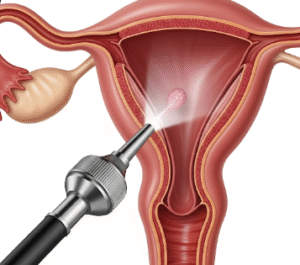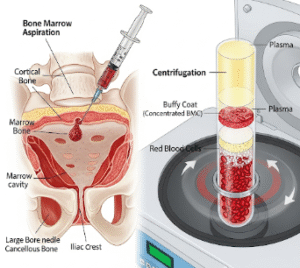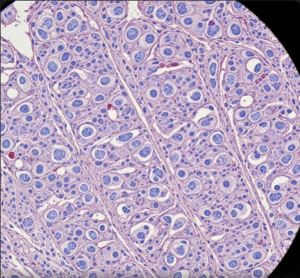Overview
Low blood pressure, medically known as hypotension, occurs when the force of blood against the walls of the arteries is lower than normal, often leading to insufficient blood flow to vital organs such as the brain, heart, and kidneys. While mild hypotension may be asymptomatic and even healthy in some individuals, severe or chronic hypotension can cause dizziness, fainting, shock, and organ damage.
In Korea, modern hospitals provide comprehensive evaluation, advanced diagnostics, and treatment strategies to manage hypotension effectively. Patients benefit from rapid interventions in emergency cases, specialized cardiology and neurology care, and lifestyle guidance for long-term management.
What is Low Blood Pressure?
Blood pressure is considered low when systolic pressure is below 90 mmHg and diastolic pressure is below 60 mmHg. Hypotension may be classified as:
- Acute hypotension: Sudden drop in blood pressure, often caused by blood loss, dehydration, or severe infection
- Chronic hypotension: Persistent low blood pressure without severe symptoms, which may be due to genetics, endocrine disorders, or heart problems
- Orthostatic hypotension: Blood pressure drops significantly upon standing, causing dizziness or fainting
- Postprandial hypotension: Low blood pressure after meals, common in elderly patients
Symptoms
Symptoms of hypotension vary depending on severity and underlying causes:
- Dizziness or lightheadedness, especially when standing
- Fainting (syncope)
- Blurred or dim vision
- Nausea
- Fatigue and weakness
- Cold, clammy, or pale skin
- Rapid or shallow breathing
- Confusion or difficulty concentrating
- Shock in severe cases, with extremely low blood pressure leading to organ failure
Causes
Low blood pressure can arise from a variety of medical, environmental, and physiological factors:
Medical causes:
- Heart problems: Heart failure, bradycardia, heart attack, or valve disorders
- Endocrine disorders: Addison’s disease, hypothyroidism, or low blood sugar
- Severe infection (septicemia): Can cause septic shock and life-threatening hypotension
- Blood loss: Trauma, surgery, or internal bleeding
- Nutritional deficiencies: Low intake of vitamins B12 and folate
Medications:
- Diuretics, alpha- or beta-blockers
- Antidepressants or antipsychotics
- Vasodilators or medications for Parkinson’s disease
Other causes:
- Dehydration: Insufficient fluid intake or excessive fluid loss through vomiting, diarrhea, or sweating
- Pregnancy: Circulatory changes can lower blood pressure temporarily
- Severe allergic reactions (anaphylaxis): Can cause a rapid drop in blood pressure
Risk Factors
- Age: Elderly individuals are more prone to orthostatic hypotension
- Underlying medical conditions: Heart disease, endocrine disorders, or chronic infections
- Dehydration: Common in hot climates or due to inadequate fluid intake
- Medications: Certain drugs increase the likelihood of hypotension
- Pregnancy: Blood pressure naturally decreases during the first and second trimesters
- Genetics: Some individuals have naturally lower blood pressure without symptoms
Complications
While mild hypotension is often harmless, severe or untreated cases may lead to:
- Fainting and falls: Increased risk of injury, particularly in elderly individuals
- Shock: Life-threatening condition with organ failure due to inadequate blood flow
- Heart and kidney damage: Chronic low blood pressure can impair organ perfusion
- Cognitive impairment: Confusion or delirium due to reduced cerebral blood flow
- Complications during surgery or anesthesia: Hypotension may cause complications if not managed promptly
Prevention
Preventive strategies focus on hydration, nutrition, and lifestyle modifications:
- Adequate fluid intake: Maintain proper hydration to support blood volume
- Balanced diet: Include salt, essential vitamins, and minerals if medically appropriate
- Gradual position changes: Rise slowly from sitting or lying to standing to prevent dizziness
- Exercise regularly: Promote healthy circulation and cardiovascular fitness
- Monitor medications: Adjust medications under physician supervision to avoid hypotension
- Compression stockings: Improve blood flow and reduce pooling in the legs
- Avoid alcohol excess: Alcohol can lower blood pressure further
Treatment Options in Korea
Diagnosis
Korean medical centers employ advanced diagnostic approaches to identify hypotension causes:
- Blood pressure monitoring: Repeated measurements in different positions (lying, sitting, standing)
- Blood tests: Assess kidney function, electrolytes, hormone levels, and complete blood count
- Electrocardiogram (ECG): Detect heart rhythm abnormalities
- Echocardiography: Evaluate heart structure and function
- Tilt table test: Diagnose orthostatic hypotension
- Imaging: Ultrasound or CT scans to detect internal bleeding or vascular issues
Medical Management
- Medications: Fludrocortisone or midodrine may be prescribed to raise blood pressure
- Treat underlying conditions: Hormonal deficiencies, heart disorders, or infections
- Intravenous fluids: For dehydration or acute hypotensive episodes
- Electrolyte correction: Restore sodium or potassium balance as needed
Lifestyle and Dietary Interventions
- Increase salt intake under medical supervision
- Small, frequent meals to prevent postprandial hypotension
- Adequate fluid consumption throughout the day
- Physical therapy and exercises to improve vascular tone and circulation
Supportive Care
- Monitoring in hospitals or clinics for severe hypotension
- Patient education on recognizing warning signs of dangerously low blood pressure
- Fall prevention strategies in elderly or high-risk patients
- Long-term follow-up to monitor underlying disorders and medication effects
Prognosis
The prognosis for low blood pressure in Korea largely depends on the underlying cause and timely management:
- Mild hypotension with no symptoms often does not require treatment and carries an excellent prognosis
- Chronic hypotension due to medical conditions can be managed effectively with medications, lifestyle changes, and ongoing monitoring
- Severe hypotension or hypotensive shock requires immediate intervention to prevent organ failure and death
- With modern medical care and public health awareness in Korea, most patients achieve stability and improved quality of life through appropriate treatment












